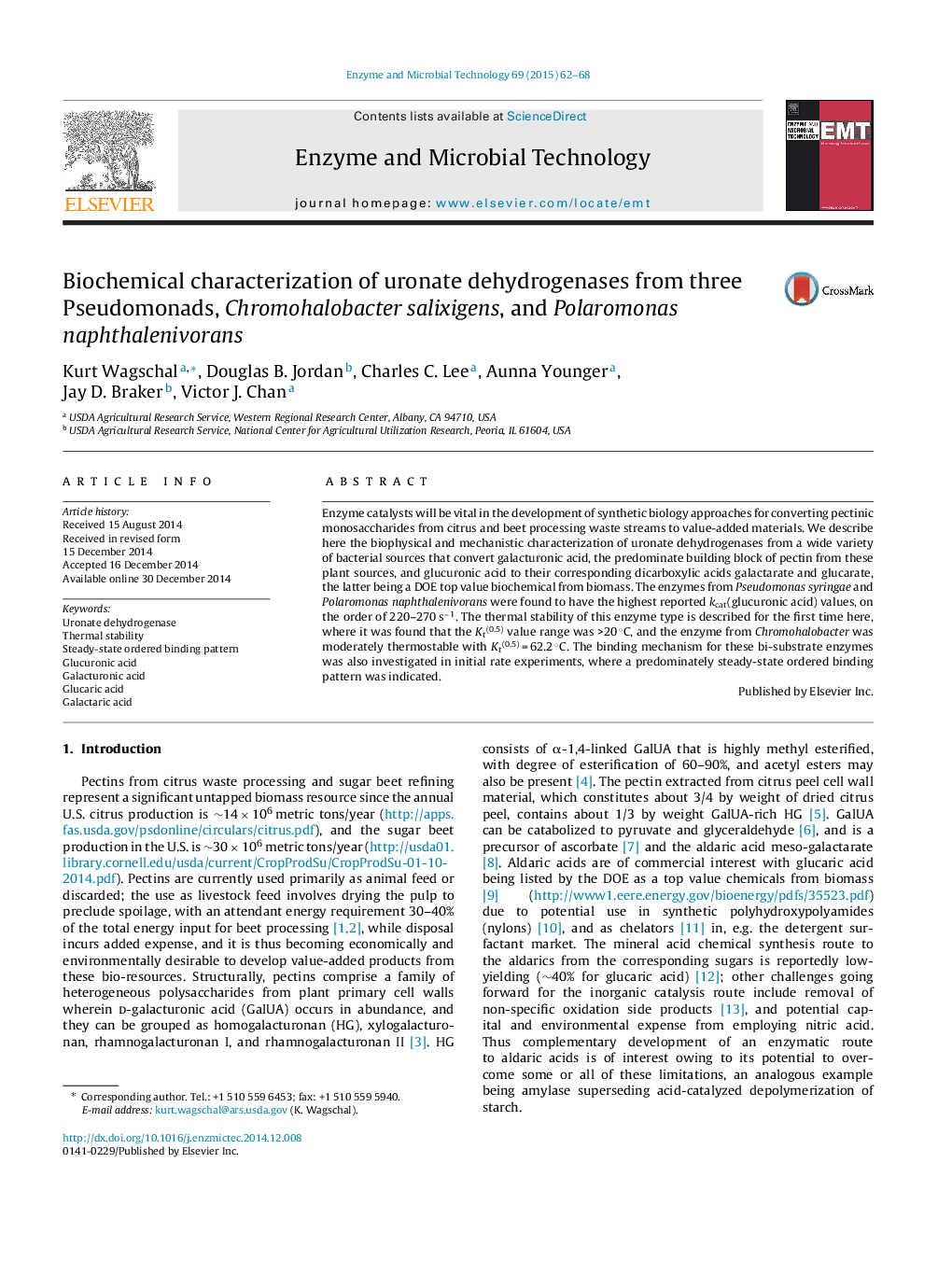| Article ID | Journal | Published Year | Pages | File Type |
|---|---|---|---|---|
| 16949 | Enzyme and Microbial Technology | 2015 | 7 Pages |
Enzyme catalysts will be vital in the development of synthetic biology approaches for converting pectinic monosaccharides from citrus and beet processing waste streams to value-added materials. We describe here the biophysical and mechanistic characterization of uronate dehydrogenases from a wide variety of bacterial sources that convert galacturonic acid, the predominate building block of pectin from these plant sources, and glucuronic acid to their corresponding dicarboxylic acids galactarate and glucarate, the latter being a DOE top value biochemical from biomass. The enzymes from Pseudomonas syringae and Polaromonas naphthalenivorans were found to have the highest reported kcat(glucuronic acid) values, on the order of 220–270 s−1. The thermal stability of this enzyme type is described for the first time here, where it was found that the Kt(0.5) value range was >20 °C, and the enzyme from Chromohalobacter was moderately thermostable with Kt(0.5) = 62.2 °C. The binding mechanism for these bi-substrate enzymes was also investigated in initial rate experiments, where a predominately steady-state ordered binding pattern was indicated.
